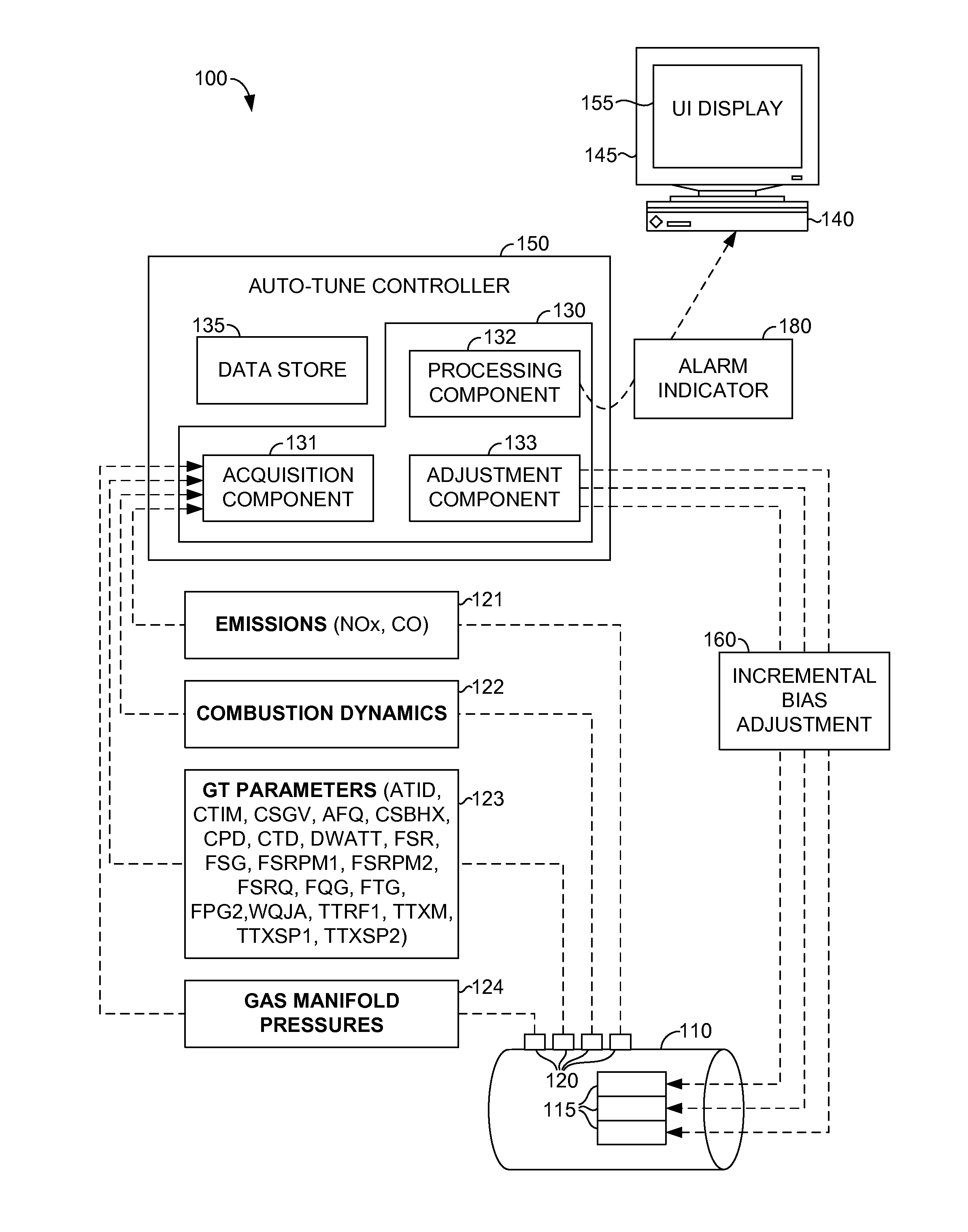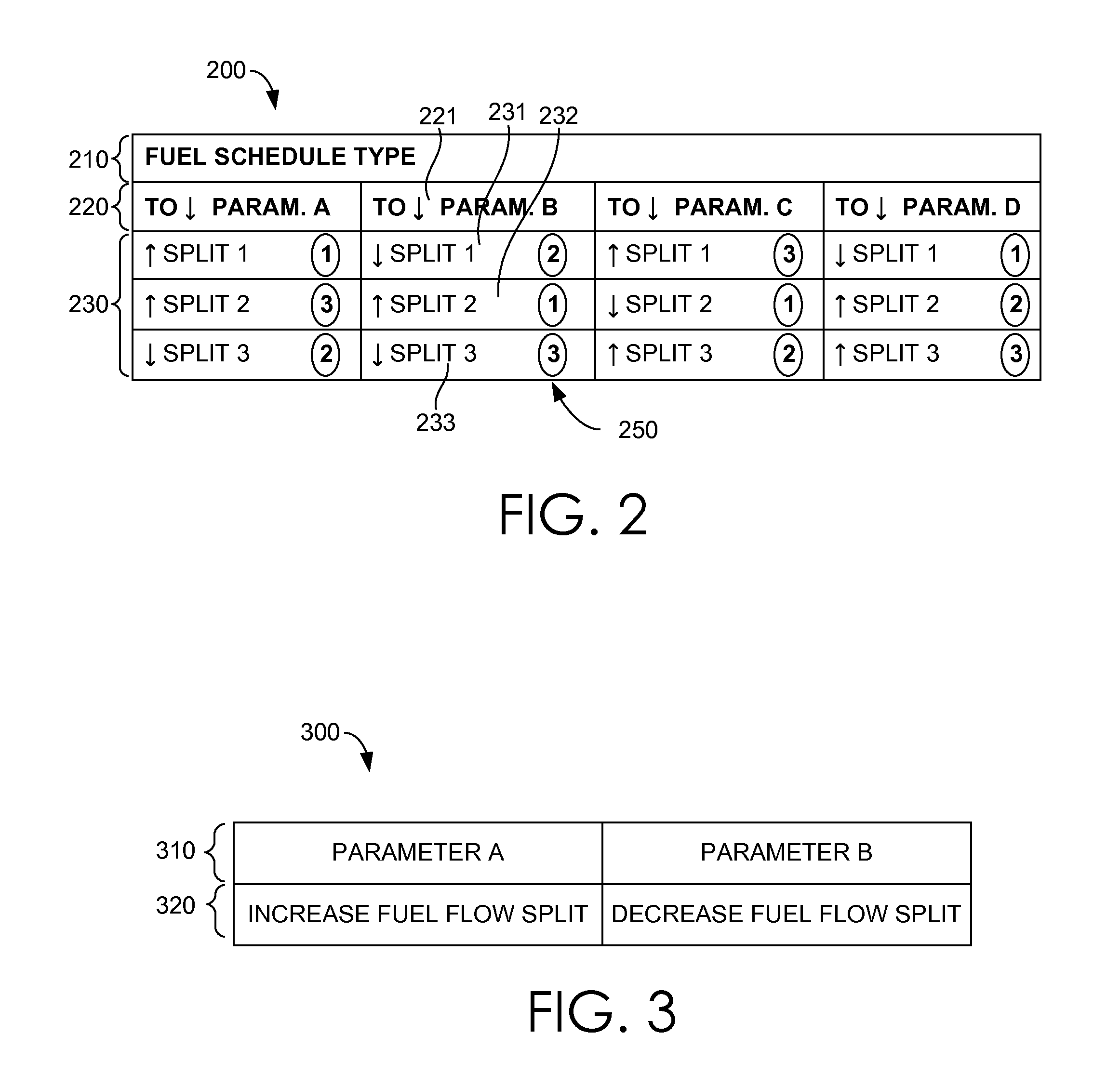Automated extended turndown of a gas turbine engine combined with incremental tuning to maintain emissions and dynamics
a gas turbine engine and automatic extension technology, applied in the direction of machines/engines, mechanical equipment, light and heating equipment, etc., can solve the problems of affecting the operation of the gt engine, the performance may fall outside the preferred operating range, and the manual adjustment is labor-intensive, so as to avoid the possibility of flame-out or other alarm or safety conditions, avoid the effect of fuel switching or flame-out during operation and greater operating stability
- Summary
- Abstract
- Description
- Claims
- Application Information
AI Technical Summary
Benefits of technology
Problems solved by technology
Method used
Image
Examples
Embodiment Construction
[0030]The subject matter of the present invention is described with specificity herein to meet statutory requirements. However, the description itself is not intended to limit the scope of this patent. Rather, the inventors have contemplated that the claimed subject matter might also be embodied in other ways, to include different components, combinations of components, steps, or combinations of steps similar to the ones described in this document, in conjunction with other present or future technologies.
[0031]As one skilled in the art will appreciate, embodiments of the present invention may be embodied as, among other things: a method, system, or computer-program product. Accordingly, the embodiments may take the form of a hardware embodiment, a software embodiment, or an embodiment combining software and hardware. In one embodiment, the present invention takes the form of a computer-program product that includes computer-usable instructions embodied on one or more computer-readab...
PUM
 Login to View More
Login to View More Abstract
Description
Claims
Application Information
 Login to View More
Login to View More - R&D
- Intellectual Property
- Life Sciences
- Materials
- Tech Scout
- Unparalleled Data Quality
- Higher Quality Content
- 60% Fewer Hallucinations
Browse by: Latest US Patents, China's latest patents, Technical Efficacy Thesaurus, Application Domain, Technology Topic, Popular Technical Reports.
© 2025 PatSnap. All rights reserved.Legal|Privacy policy|Modern Slavery Act Transparency Statement|Sitemap|About US| Contact US: help@patsnap.com



